The empire of Mr Chow
What’s that name? Mr Chow. That name again, is Mr. Chow! Restaurateur, art collector, architect, designer and icon, the charming, dapper, round-spectacled Michael Chow has been at the heart of rock, fashion and art high society since opening his first eponymous restaurant in Knightsbridge in 1968. Over the last forty years he’s been friends with Chow-devotees Jagger, Warhol and most of the pop art set, been married to Vogue’s Grace Coddington, supermodel Tina Chow and now Korean-American fashion designer Eva Chun. He remains at the eye of the glamour storm on both sides of the Atlantic. For the last ten years he’s lived with Eva and their daughter Asia in the L.A mansion that he designed himself, and filled with one of the most impressive collections of contemporary art in the world.
Michael and Eva are L.A’s ultimate power couple. As well as being at the top of every Beverly Hills guest list, they host major events at their home, including Gucci-sponsored charity dinners. It’s the perfect venue. The Chow mansion, built around a vast galleried atrium is big on volume. Huge in fact. And a bit more besides. The ceilings soar, light pouring down through a glass roof. The Chows are magpies with impeccable taste: their collection of Émile-Jacques Ruhlmann furniture is one of the most impressive in private hands. “This elevator is identical to the one in Hermes in Beverly Hills,” says Mr Chow as he presses the second floor button in the leather-lined and brass lift. “I believe in what Oscar Wilde said: ‘I have simple tastes, I am always satisfied by the best’.
PICTURES: Mark C.O’Flaherty
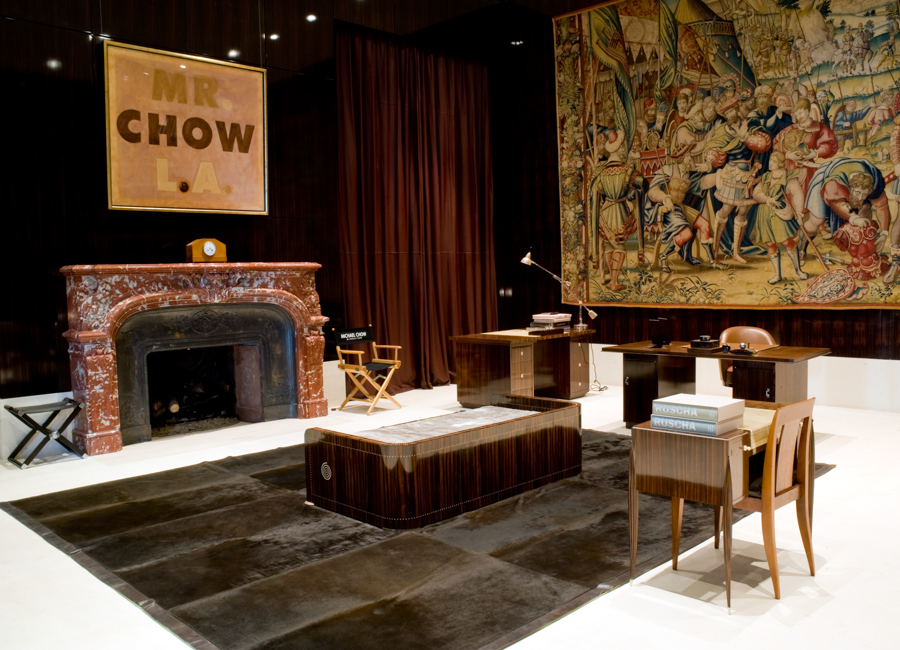
The Chows have had their study panelled floor-to-ceiling in macassar ebony, to echo their incredible collection of deco furniture. The tapestry is a 16th century Belgian antique, and the Mr Chow L.A painting is a 1973 piece by pop artist Ed Ruscha, “made entirely from food,” says Michael. “I have a list of all the ingredients, and they include egg white and vegetables." The furniture is a mixture of Jean-Michel Frank, Pierre Chareau and art deco-master Émile-Jacques Ruhlmann.
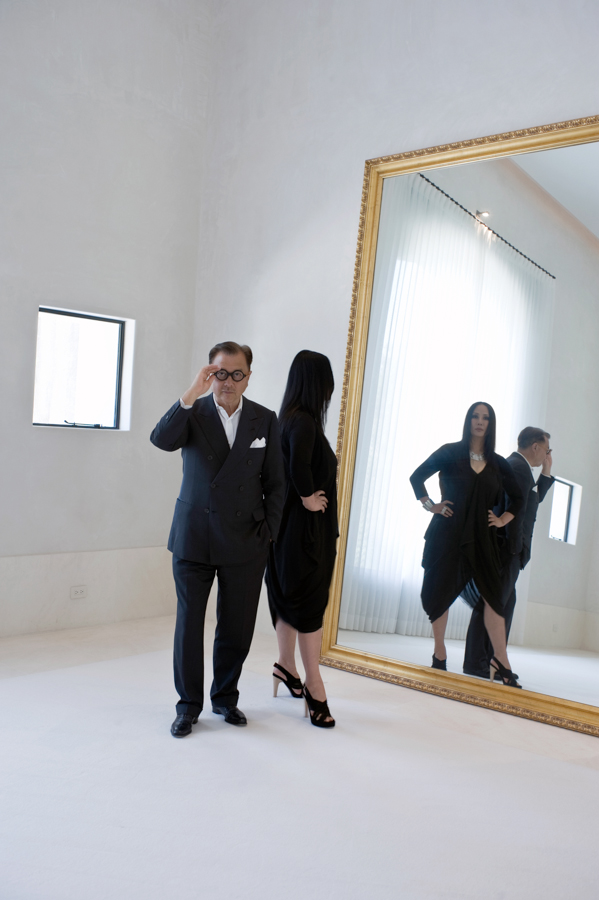
Eva Chow: "The seed of this house was the Museo de Arte Reina Sofia. It is harmoniously proportioned, simple and functional. The luxury is in its space, and its proportions."
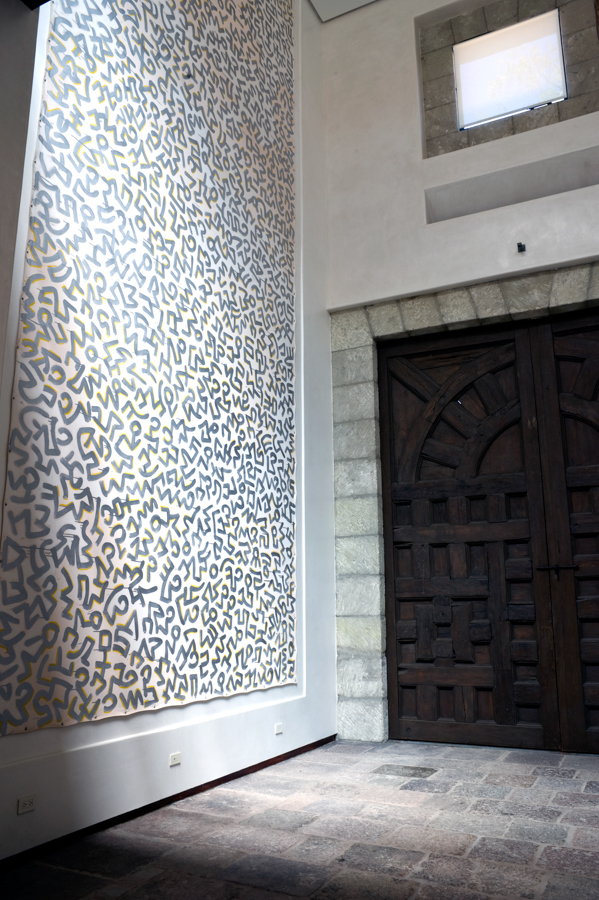
The two-storey mural by the front door is by the late graffiti artist Keith Haring. “I commissioned it for a restaurant in Kyoto which has since closed,” says Mr. Chow. “It was actually a horizontal piece, and I’ve hung it here vertically which I think is quite funny. I hope he wouldn’t mind.”
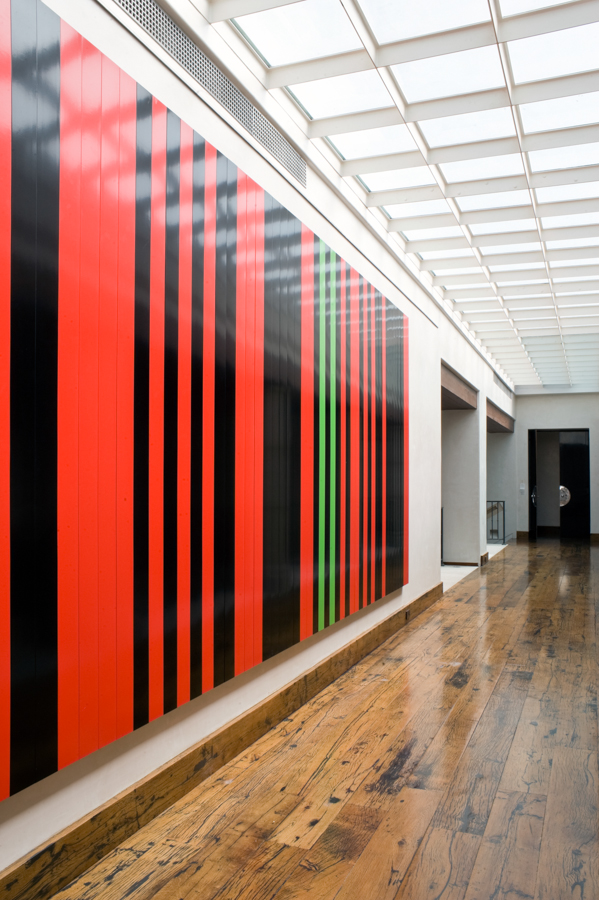
Keith Tyson’s artwork hangs on the upper gallery of the atrium. “The colours represent roulette,” says Mr Chow. “Keith loves gambling!”
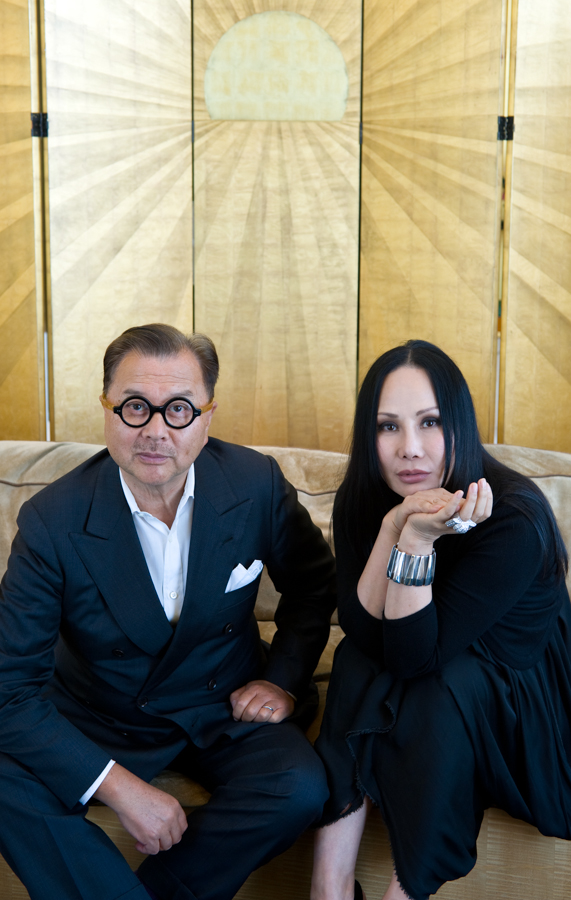
The Chows wanted their Gold Room to be “a surprise,” says Eva. “It’s like a beautiful necklace. You don’t really need it, but it’s beautiful.” The Sunrise/Sunset screen is a copy of a priceless Jean Dunand original, which they owned and donated to the Met Museum.
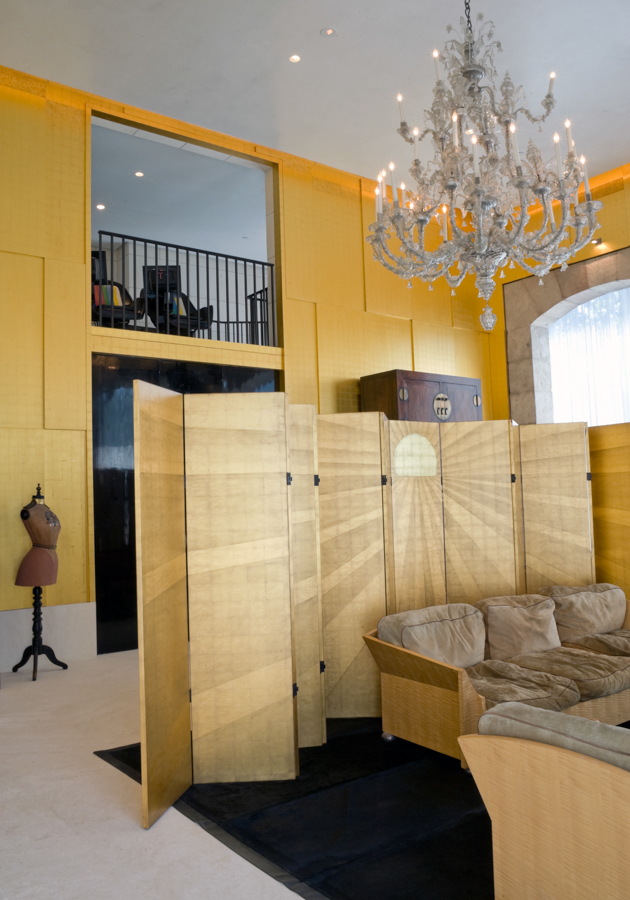
The original deco sofa and chairs are by Pierre Chareau. Pieces by British pop artist, and friend, Peter Blake – including a customized tailor’s dummy – punctuate the room. “I collect Peter’s work because it’s the antithesis of Chinoserie,” says Mr. Chow. An airport TV chair sculpture by the late Korean video artist Nam June Piak sits on a mezzanine platform.
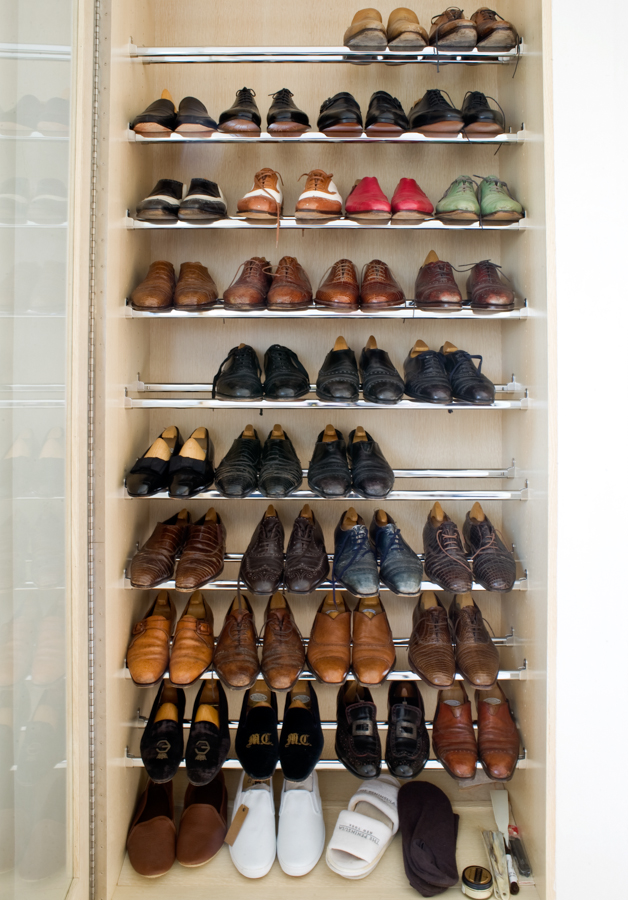
Mr Chow has kept every pair of shoes he has ever owned, including a collection of the Duke of Windsor’s slippers and shoes bought at auction. “When I find something I like, that’s all I buy,” says Chow. “It can be a kind of belt or a pair of shoes. I’ve always been a collector, whether it be Coca Cola bottles, Mickey Mouse watches or Hermes suits.”
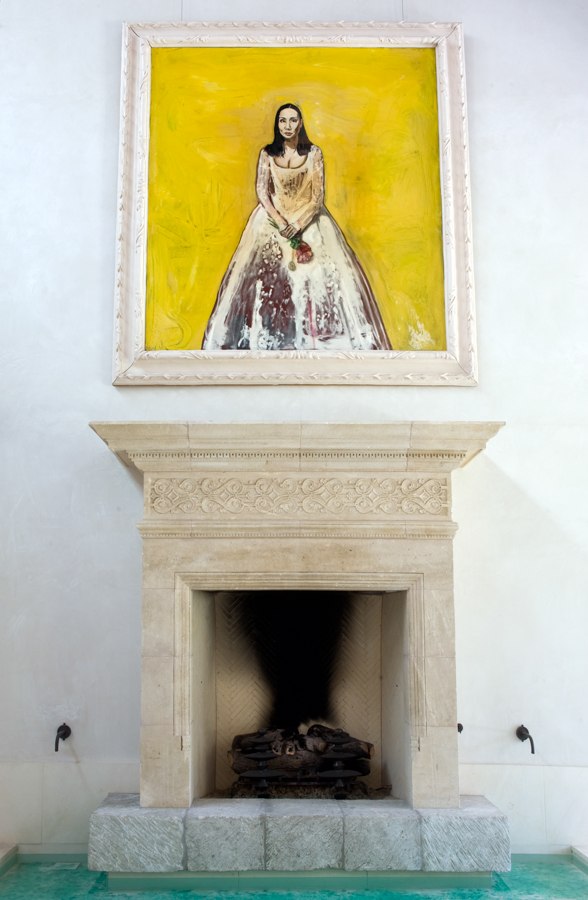
The portrait of Eva, wearing a Vivienne Westwood wedding gown, is by Julian Schnabel. “The fireplaces are a design I stole from Frank Lloyd Wright," says Mr Chow. “To go one better I added fountains on each side. Also, water putting out fire is bad feng shui, so the green pebbles in the water are there to signify plants, to make it good feng shui.”
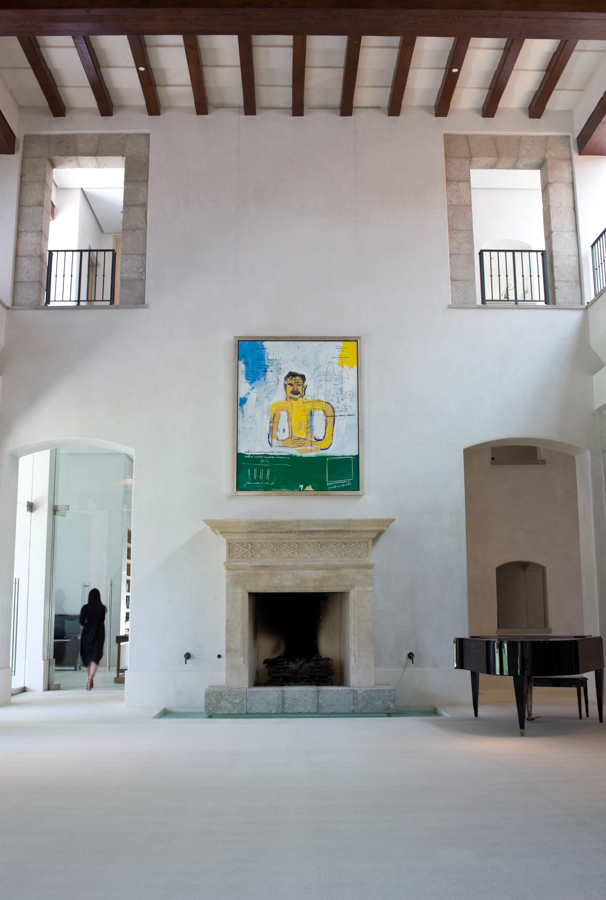
The portrait of Mr Chow at the other end of the hall is by Jean-Michel Basquiat.
The vanity table is a classic piece of art deco by Émile-Jacques Ruhlmann. “When I studied architecture Bauhaus was what everyone worshipped,” says Michael. “But about 30 years ago I discovered Ruhlmann, and from then on he’s been my main architectural inspiration.” The artwork is by Ed Ruscha.


